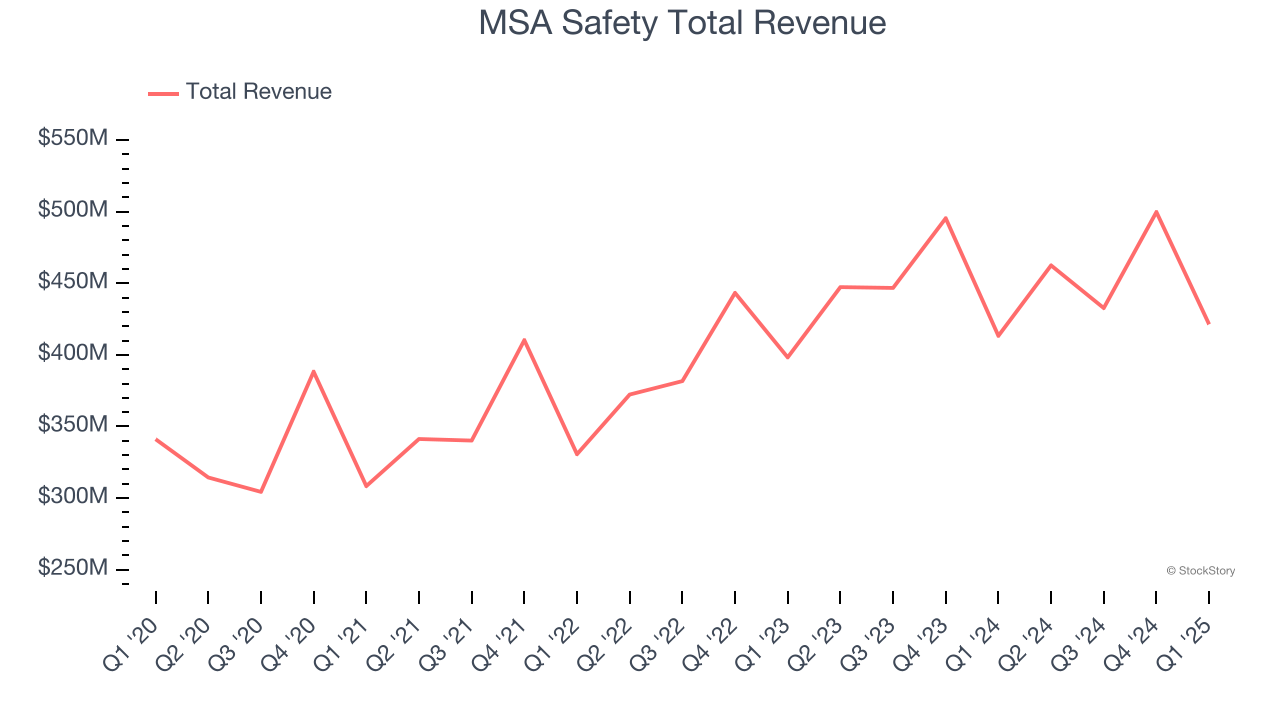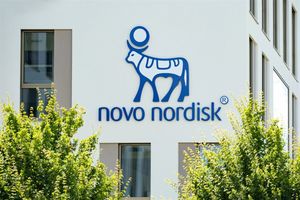
The end of an earnings season can be a great time to discover new stocks and assess how companies are handling the current business environment. Let’s take a look at how MSA Safety (NYSE: MSA) and the rest of the safety & security services stocks fared in Q1.
Rising concerns over physical security, cybersecurity threats, and workplace safety regulations will present opportunities for companies in this sector. AI and digitization will enhance surveillance, access control, and threat detection, which could benefit key players in Safety & Security Services. These trends could also introduce ethical and regulatory concerns over data privacy and automated decision-making in security operations, giving rise to headline risks. Finally, increasing scrutiny on private security practices and evolving criminal justice policies again mean that companies in the space need to operate with the utmost care or risk being the poster child of abuse of power.
The 5 safety & security services stocks we track reported a satisfactory Q1. As a group, revenues beat analysts’ consensus estimates by 1.5% while next quarter’s revenue guidance was in line.
Amidst this news, share prices of the companies have had a rough stretch. On average, they are down 6.1% since the latest earnings results.
MSA Safety (NYSE: MSA)
Founded in 1914 as Mine Safety Appliances to protect coal miners from dangerous gases, MSA Safety (NYSE: MSA) designs and manufactures advanced safety products that protect workers and facilities across industries including fire service, energy, construction, and manufacturing.
MSA Safety reported revenues of $421.3 million, up 1.9% year on year. This print exceeded analysts’ expectations by 5%. Overall, it was an exceptional quarter for the company with a solid beat of analysts’ EPS estimates.
"Our solid first quarter results demonstrate the team's continued dedication to executing our Accelerate strategy. Within our diversified portfolio, revenue growth was fueled by robust performance in detection and partnering with our customers to accelerate some shipments in consideration of tariffs," said Steve Blanco, MSA Safety President and CEO.

MSA Safety scored the biggest analyst estimates beat of the whole group. Unsurprisingly, the stock is up 7.3% since reporting and currently trades at $165.06.
Is now the time to buy MSA Safety? Access our full analysis of the earnings results here, it’s free.
Best Q1: CoreCivic (NYSE: CXW)
Originally founded in 1983 as the first private prison company in the United States, CoreCivic (NYSE: CXW) operates correctional facilities, detention centers, and residential reentry programs for government agencies across the United States.
CoreCivic reported revenues of $488.6 million, down 2.4% year on year, outperforming analysts’ expectations by 2.5%. The business had an exceptional quarter with a solid beat of analysts’ EPS estimates.

Although it had a fine quarter compared its peers, the market seems unhappy with the results as the stock is down 5.2% since reporting. It currently trades at $21.44.
Is now the time to buy CoreCivic? Access our full analysis of the earnings results here, it’s free.
Weakest Q1: GEO Group (NYSE: GEO)
With a global footprint spanning three continents and approximately 81,000 beds across 100 facilities, GEO Group (NYSE: GEO) operates secure facilities, processing centers, and reentry services for government agencies in the United States, Australia, and South Africa.
GEO Group reported revenues of $604.6 million, flat year on year, falling short of analysts’ expectations by 2%. It was a disappointing quarter as it posted a significant miss of analysts’ EPS estimates.
GEO Group delivered the weakest performance against analyst estimates in the group. As expected, the stock is down 13% since the results and currently trades at $26.35.
Read our full analysis of GEO Group’s results here.
Brink's (NYSE: BCO)
Known for its iconic armored trucks that have been a fixture in American cities since 1859, Brink's (NYSE: BCO) provides secure transportation and management of cash and valuables for banks, retailers, and other businesses worldwide.
Brink's reported revenues of $1.25 billion, flat year on year. This number surpassed analysts’ expectations by 2.8%. Zooming out, it was a satisfactory quarter as it also logged a solid beat of analysts’ EPS estimates but a significant miss of analysts’ EPS guidance for next quarter estimates.
The stock is down 10.3% since reporting and currently trades at $84.61.
Read our full, actionable report on Brink's here, it’s free.
Brady (NYSE: BRC)
Founded in 1914 and evolving through more than a century of industrial innovation, Brady (NYSE: BRC) manufactures and supplies identification solutions and workplace safety products that help companies identify and protect their premises, products, and people.
Brady reported revenues of $382.6 million, up 11.4% year on year. This result came in 1% below analysts' expectations. Overall, it was a slower quarter as it also recorded a slight miss of analysts’ full-year EPS guidance estimates.
Brady scored the fastest revenue growth among its peers. The stock is down 9% since reporting and currently trades at $69.35.
Read our full, actionable report on Brady here, it’s free.
Market Update
The Fed’s interest rate hikes throughout 2022 and 2023 have successfully cooled post-pandemic inflation, bringing it closer to the 2% target. Inflationary pressures have eased without tipping the economy into a recession, suggesting a soft landing. This stability, paired with recent rate cuts (0.5% in September 2024 and 0.25% in November 2024), fueled a strong year for the stock market in 2024. The markets surged further after Donald Trump’s presidential victory in November, with major indices reaching record highs in the days following the election. Still, questions remain about the direction of economic policy, as potential tariffs and corporate tax changes add uncertainty for 2025.
Want to invest in winners with rock-solid fundamentals? Check out our Top 5 Growth Stocks and add them to your watchlist. These companies are poised for growth regardless of the political or macroeconomic climate.






